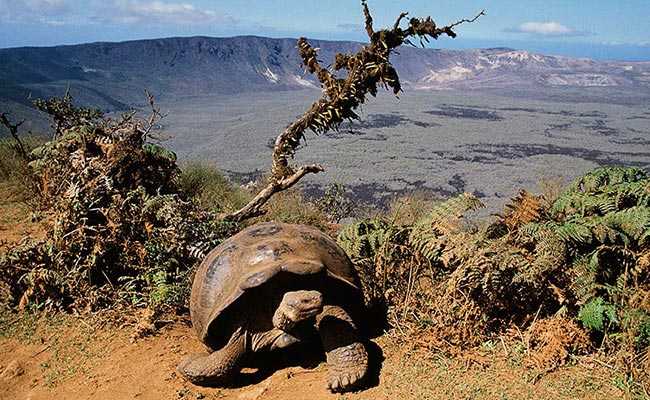Lonesome George and the Giant Tortoises of Galapagos Islands

As his name suggests, Lonesome George was one of the last of the Galapagos tortoises. Like many giant tortoises, he was estimated to be over 100 years old. While this might seem great, it is not especially old by giant tortoise standards. It wasn’t George’s age that made him stand out, but the fact that as his name suggests he was lonesome. For George was the last of the Pinta Island giant tortoises.
Lonesome George died of natural causes in June 2012. While he had the luxury of a peaceful death, something most of his kind was not afforded, it was no less of a tragedy. In dying, Lonesome George became a global symbol for conservation, not just for Galapagos tortoises but also for endangered species worldwide. This species of giant tortoise inhabits seven of the Galapagos Islands, found off the coast of South America. It is believed that the islands’ habitats are responsible for the tortoises’ gigantism. Cut off from the mainland for thousands of years, and faced with no natural predators of their own, they were able to gradually grow to the sizes for which they are now famous.
Like Lonesome George, Galapagos tortoises are capable of living to great ages. In fact, one living in captivity was known to be 170 years old when it finally died, making this species one of the most long-lived of all vertebrates. Their shell shapes are also remarkable. They are the only species of giant tortoise to display different shell shapes depending on their specific island habitats. It is differences like this that made study of them so interesting to naturalist Charles Darwin. When he visited the islands in 1835, his discoveries about the animals contributed to his famous theory of evolution.
More important than Lonesome George himself is the legacy of his death. While recent studies into the DNA of giant tortoises suggest that there may be some surviving members of his subspecies after all, this is not confirmed. Nor does it excuse the actions that led to the decimation of his species. It was human intervention that saw the Galapagos tortoise population drop from 250,000 in the 16th century to around 3,000 in the 1970s.
The story is all too familiar. Destruction of their habitat and the introduction of non-native species to their islands in the 16th century were partly responsible for the declining tortoise population. After thousands of years without predators, they were unable to defend themselves against the rats and pigs that accompanied early sailors to their islands. Another factor was long-standing exploitation of the tortoises for their impressive shells and meat.
The best hope for the future of the Galapagos tortoises lies in public awareness of their situation. Conservation efforts and captive breeding have succeeded in raising total estimated numbers to 19,000, but it will take prolonged efforts to stabilise the population and secure a future for the Galapagos tortoise in the 21st century, so that the case of Lonesome George is not repeated.